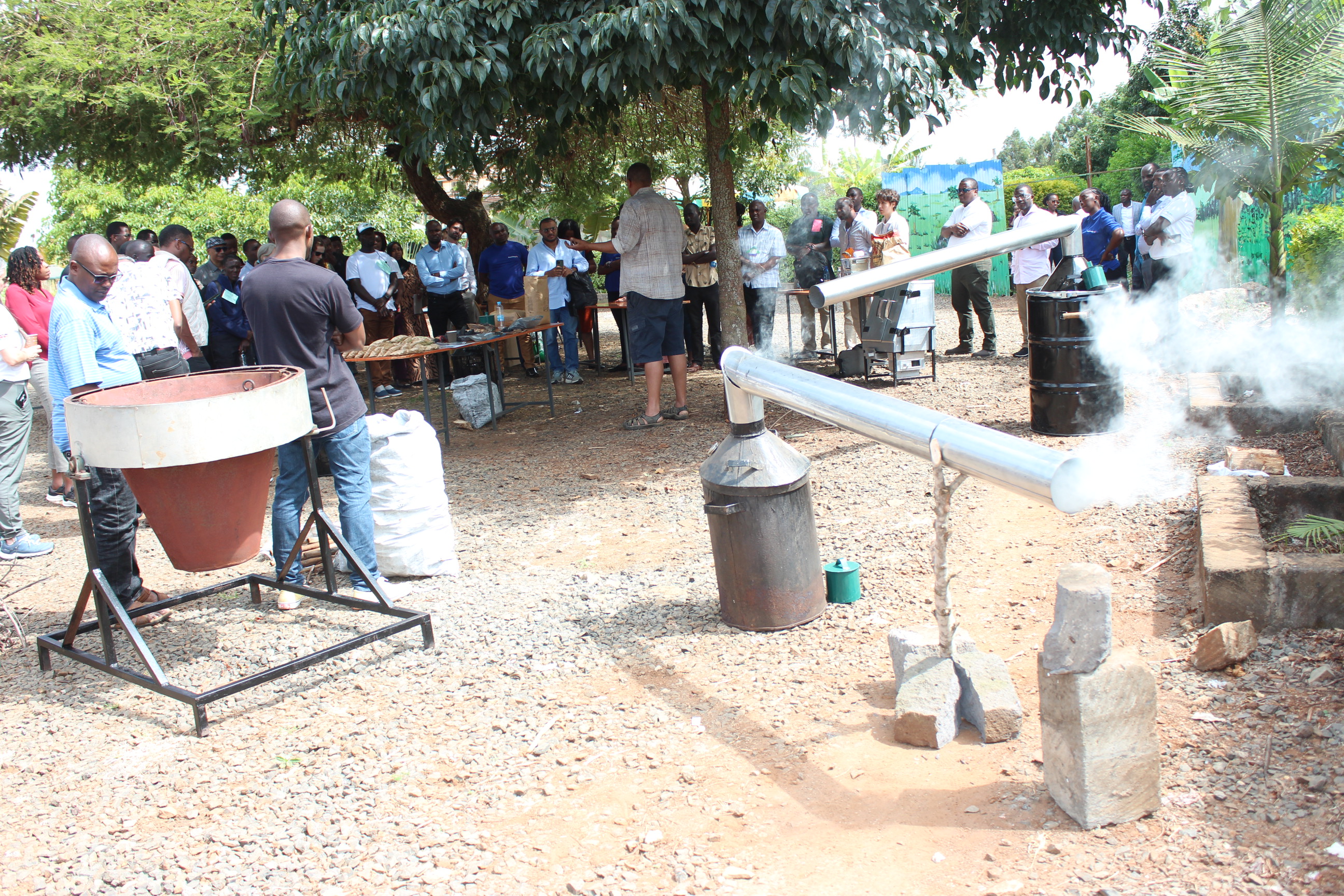 Some of the equipment used to produce biochar displayed during a training session held in Murang'a / ALICE WAITHERA
Some of the equipment used to produce biochar displayed during a training session held in Murang'a / ALICE WAITHERA
Farmers have been urged to embrace the production and application of biochar on their farms to boost harvest while conserving the environment.
Biochar is a type of charcoal made from organic waste through a process called pyrolysis. The process involves heating the biomass in the absence of oxygen, converting it into a porous, carbon-rich material that can be used to repair soils.
Biochar retains high levels of moisture in the soil, increases the circulation of air in the soil, adds carbon and increases the retention nutrients such as phosphorous and nitrogen, and allows microbial activities that stimulate plant growth.
It also reduces the leaching of nutrients in the soil, reduces the release of methane and nitrogen dioxide from the soil, increases the surface area for roots to absorb minerals and absorbs carbon dioxide from organic decomposition.
Stakeholders from 14 countries held a week-long biochar academy organised by International Biochar Initiative (IBI) and Circular Bio-nutrient Economy Network (CBEN) to discuss how biochar production and application can be upscaled.
“Our mission is to make biochar safe for use and make it beneficial to the community and environment while creating revenue for producers,” Luisa Marin, an executive director at IBI, said.
She said biochar can be beneficial in several ways, including as a way of managing agricultural residue, amending soils and attracting carbon credit.
The organisation, Marin said, has been organising numerous awareness forums globally but noted the academy held in Murang’a was the first on the continent.
“We use this educational format to understand how biochar is being produced locally and the training needs so we can come up with the resources to cater to them,” she said.
Marin said biochar production is an ancient technique that can be traced back 7,000 years ago in the Amazons and has been a common practice for many people establishing kitchen gardens.
About 15 years ago, industrial production of biochar started for agricultural and construction, and production of energy and started attracting carbon credit five years ago, sparking a global boom.
This led to the development of global standards by IBI that includes laboratory tests to ensure it has minimal pollutants and contains the required carbon organic content.
“We’re inviting farmers to embrace biochar because then they will be using less water on their farms, less chemicals and stand to get more harvests,” she said.
Marin, who comes from Mexico, said numerous trainers have been trained to guide community members on how and when to produce biochar depending on the soil types and land size.
“Farmers can produce it at an artisanal level by using farm residue and transform it to organic fertiliser using manure or at the communal level where there can be mass production areas that produce biochar that is then handed to the farmer who provided the residue or turned into fertiliser,” she said.
“It's another way of removing carbon dioxide and greenhouse gases from the atmosphere and managing climate change. An artisanal producer may not produce enough to register for carbon credit but it can be done through groups.”
Johannes Lehmann, a professor at Cornell University in the USA, one of the largest agricultural universities globally, said sub- Saharan Africa has the capacity to be self-sufficient in fertiliser production through biochar production.
Most of the farm waste, he noted, ends up in dumpsites or become pollutants in rivers when it can be recycled and become beneficial to farms.
Lehmann said if all nutrients-dense farm waste is recycled in the country, it would raise nitrogen available in soils about five times more, resulting in better harvests.
He said CBEN, a coalition of practitioners, academics and farming organisations and industries was formed three years ago to figure out how to explore circularity to positively impact farming activities using high value residue to produce safe and efficient fertilisers.
Samuel Thuo, a CBEN official, said farmers can use a metallic drum or dig a hole where they can burn the residue, cover it with a metallic cover for the fire to go out and then pour water on the burnt residue to produce biochar.
“This can be done using any crop including maize and banana stalks. This waste, when left in the farm, produce methane gas, which worsens climate change,” he said, noting that more than 80 per cent of harvests remain on farms as waste.
Roy Otieno, a farmer from Kisumu county, said he uses black soldier flies to reduce the cost of poultry feeds while using the organic waste produced by the flies on the farm.
The larvae, he said, is used in making protein-based feeds that are too expensive and it makes up about 30 per cent of the feeds used on his farm.
“I feed the flies using waste collected from my home, schools and markets. It helps to manage the waste,” he said, adding he will be trying out biochar to rejuvenate the soil on his farm.
Kioko Mwangangi said since he started using biochar two years ago, his citrus fruits now withstand droughts without withering.
Previously, the fruits trees would be overwhelmed by the dry weather but are doing better now and producing more fruits.
“I mix the biochar with poultry and cattle manure, keep it for six months then use it and I have seen a major transformation on my farm. The trees are always green”.










